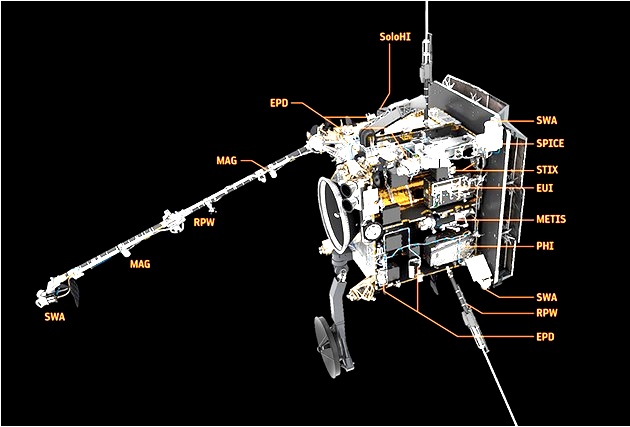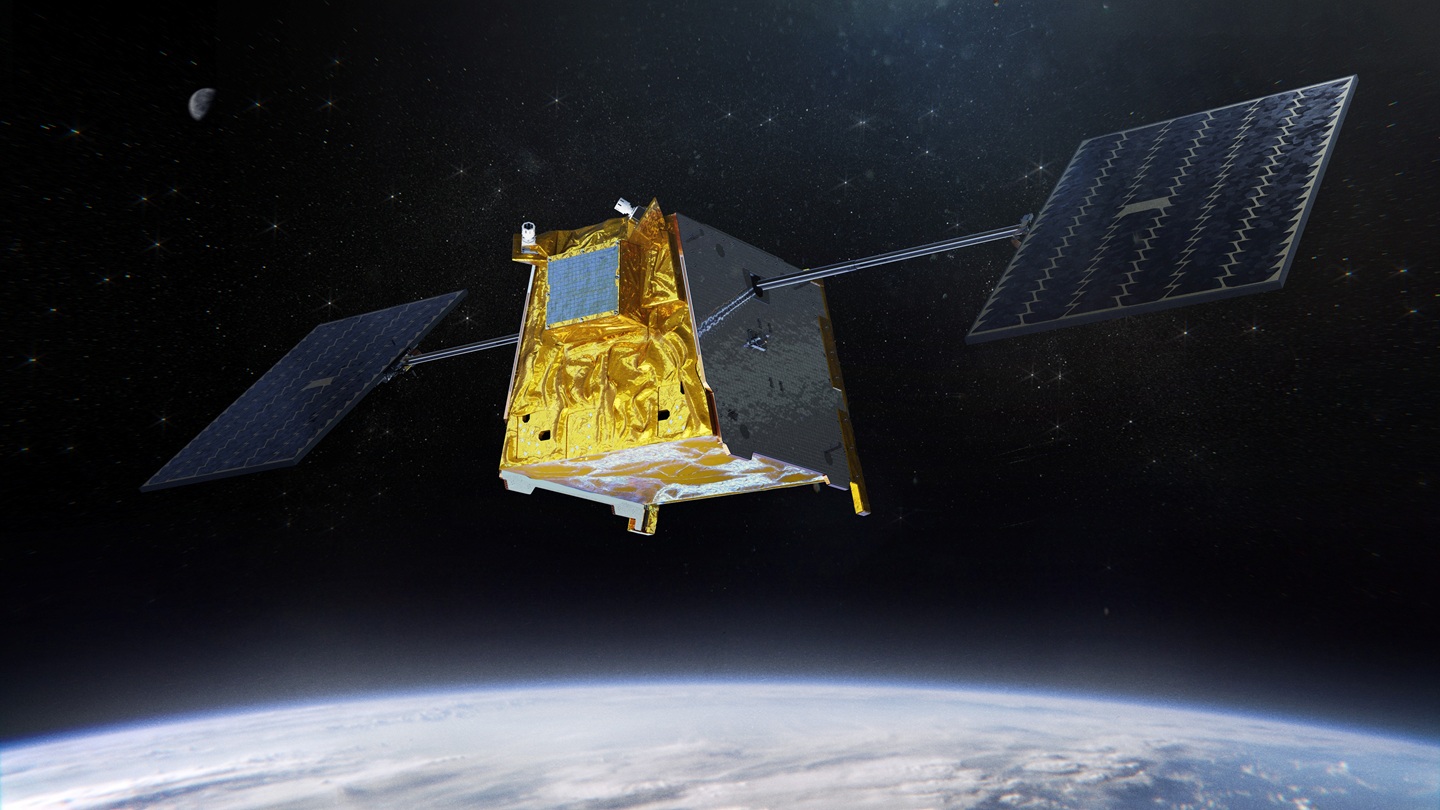First Solar Orbiter instrument sends measurements
The Solar Orbiter - ESA’s new Sun-exploring spacecraft built by Airbus at Stevenage - launched on Monday 10th February. It carries 10 scientific instruments, four of which measure properties of the environment around the spacecraft, especially electromagnetic characteristics of the solar wind, the stream of charged particles flowing from the Sun. Three of these ‘in situ’ instruments have sensors located on the 4.4 m-long boom.

Courtesy ESA / ATG media lab
Tim Horbury of Imperial College London, Principal Investigator for the Magnetometer instrument (MAG), said: "We measure magnetic fields thousands of times smaller than those we are familiar with on Earth.
"Even currents in electrical wires make magnetic fields far larger than what we need to measure. That’s why our sensors are on a boom, to keep them away from all the electrical activity inside the spacecraft."
Ground controllers at the European Space Operations Centre in Darmstadt, Germany, switched on the magnetometer’s two sensors (one near the end of the boom and the other close to the spacecraft) about 21 hours after lift-off. The instrument recorded data before, during and after the boom’s deployment, allowing the scientists to understand the influence of the spacecraft on measurements in the space environment.
Tim Horbury said: "The data we received shows how the magnetic field decreases from the vicinity of the spacecraft to where the instruments are actually deployed.
"This is an independent confirmation that the boom actually deployed and that the instruments will, indeed, provide accurate scientific measurements in the future."
As the titanium/carbon-fibre boom stretched out over an overall 30-minute period on Wednesday, almost three days after lift-off, the scientists could observe the level of the magnetic field decrease by about one order of magnitude. While at the beginning they saw mostly the magnetic field of the spacecraft, at the end of the procedure, they got the first glimpse of the significantly weaker magnetic field in the surrounding environment.
Matthieu Kretzschmar, of Laboratoire de Physique et Chimie de l’Environnement et de l’Espace in Orleans, France, Lead Co-investigator behind another sensor located on the boom, the high frequency magnetometer of the Radio and Plasma Waves instrument (RPW) instrument said: "Measuring before, during, and after the boom deployment helps us to identify and characterise signals that are not linked to the solar wind, such as perturbations coming from the spacecraft platform and other instruments.
"The spacecraft underwent extensive testing on ground to measure its magnetic properties in a special simulation facility, but we couldn’t fully test this aspect until now, in space, because the test equipment usually prevents us from reaching the needed very low level of magnetic field fluctuations."
Next, the instruments will have to be calibrated with the scientific data being collecting from mid-May.
UK scientists were instrumental in proposing the Solar Orbiter mission to ESA and the UK Space Agency provided funding for four of the 10 scientific instruments on board the spacecraft. Imperial College London, the Science and Technology Facilities Council’s RAL Space and UCL led international teams to design and build three instruments, while UCL also contributed to the fourth.
Engineers at Airbus in Stevenage designed and built the spacecraft to withstand the scorching heat from the Sun that will hit one side, while the other is frozen as the orbit keeps it in shadow.












